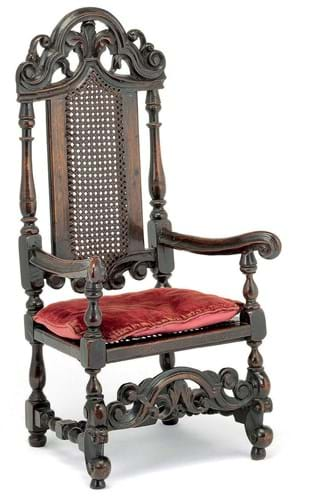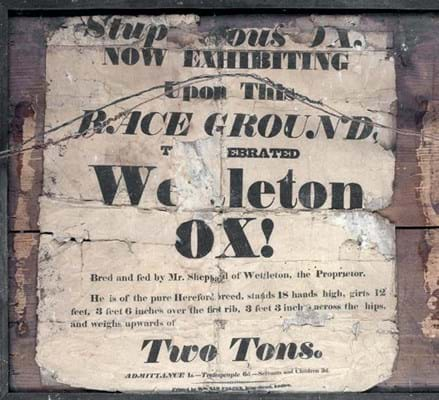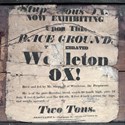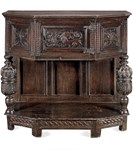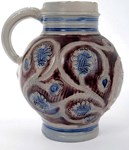Although often cited erroneously as ‘apprentice pieces’ these chairs were made, almost certainly by professional chair makers, as toys.
Bonhams sold a similar armchair of the same height and period for a hammer price of £14,000 in 2012 that for many years had been the resting place of a doll of the same period. It was stamped with the maker’s initials LM and DD.
The example sold this month had belonged to the vendor’s grandparents, Major and Mrs GL Turnham of Virginia Water, Surrey, since the 1940s and had come by descent. Modestly estimated at £800-1200, it took £11,000 from a buyer on thesaleroom.com.
‘Stupendous’ beast
Another high-performing lot in this auction was an early-19th century livestock portrait – the Wettleton Hereford Ox by William Gwynn of Ludlow (c.1795-1838). Estimated at £4000-6000, it took £16,000.
In an unusual medium (oil paint on sheet metal) the subject was a celebrated beast, standing 18 hands high and weighing upwards of two tons, that was bred by one Mr Sheppard of Wettleton in Shropshire.
It was probably painted by local artist William Gwynn – a specialist in livestock and bloodstock portraits – when shown at the Ludlow Racecourse. A fragment of the poster advertising its arrival is pasted to the reverse. It reads: Stupendous Ox now exhibiting upon this race ground. Admittance is 1s. Tradespeople 6d. Servants and children 3d.
Although undated, the 18 x 22in (46 x 56cm) picture, signed W Gwynn Ludlow lower left, was painted in the era when the distinctive white face and russet colour of the modern Hereford breed became established.
First exported to the US (Kentucky) in 1817, today it is the primary breed of the great beef-raising countries.


